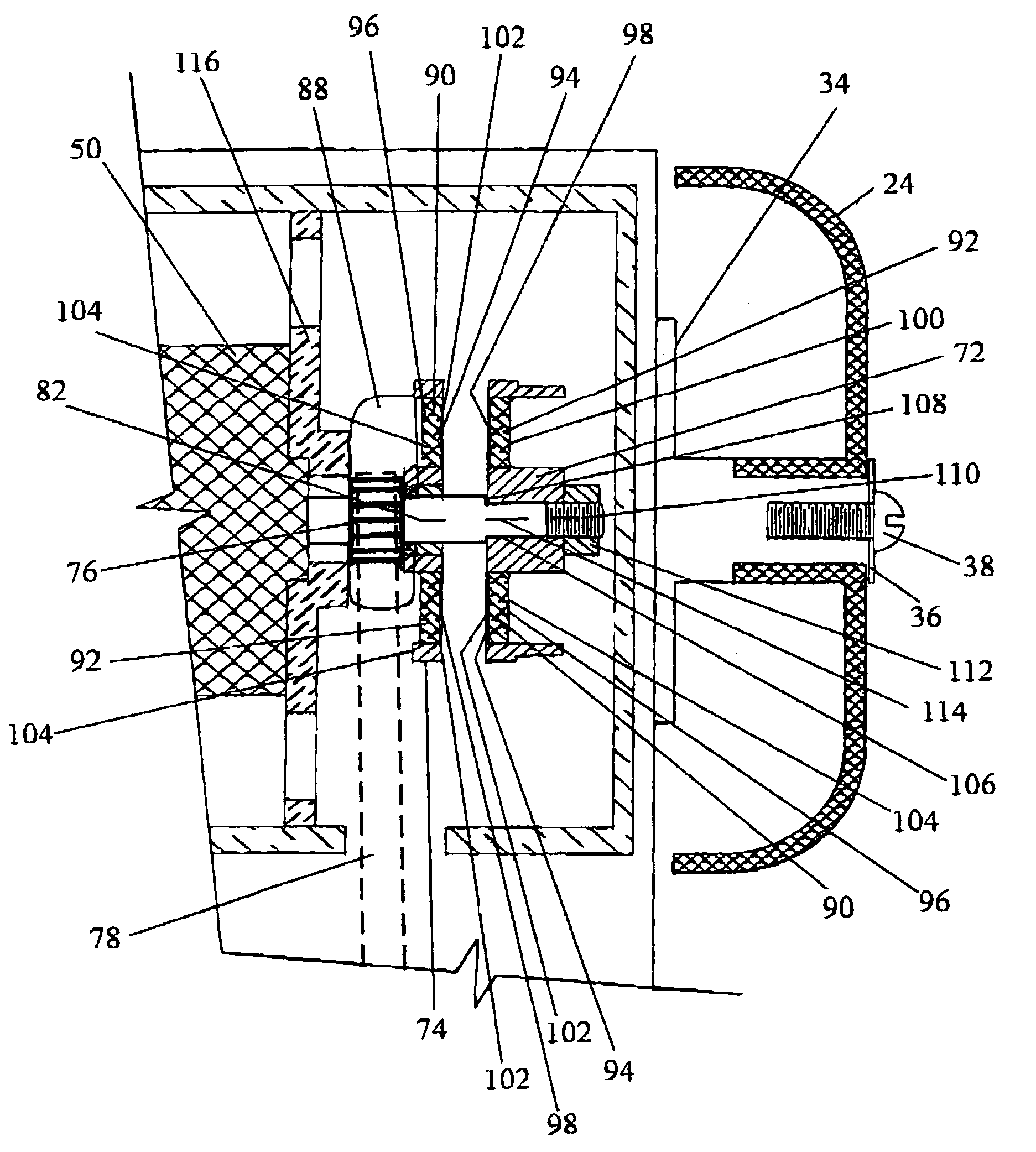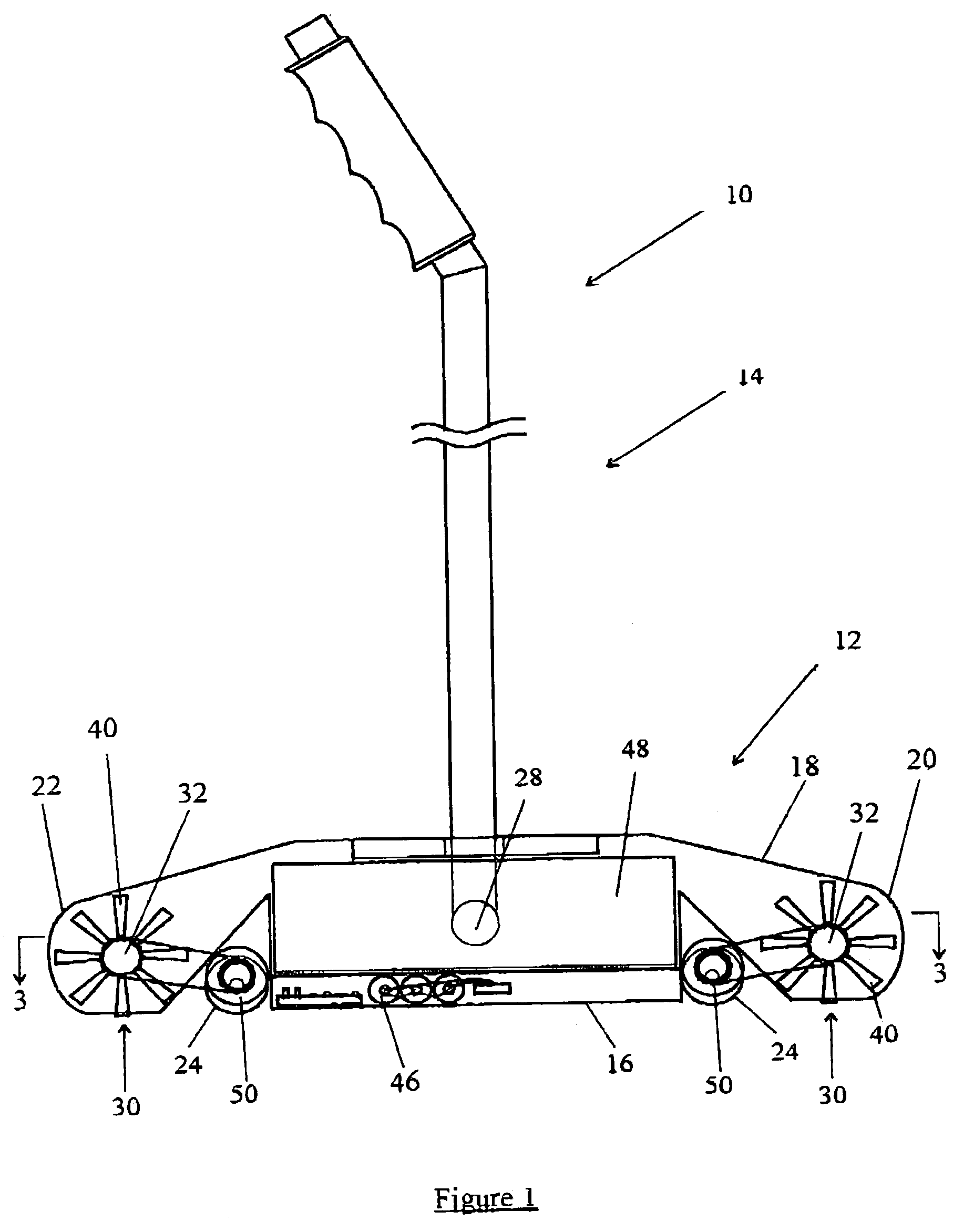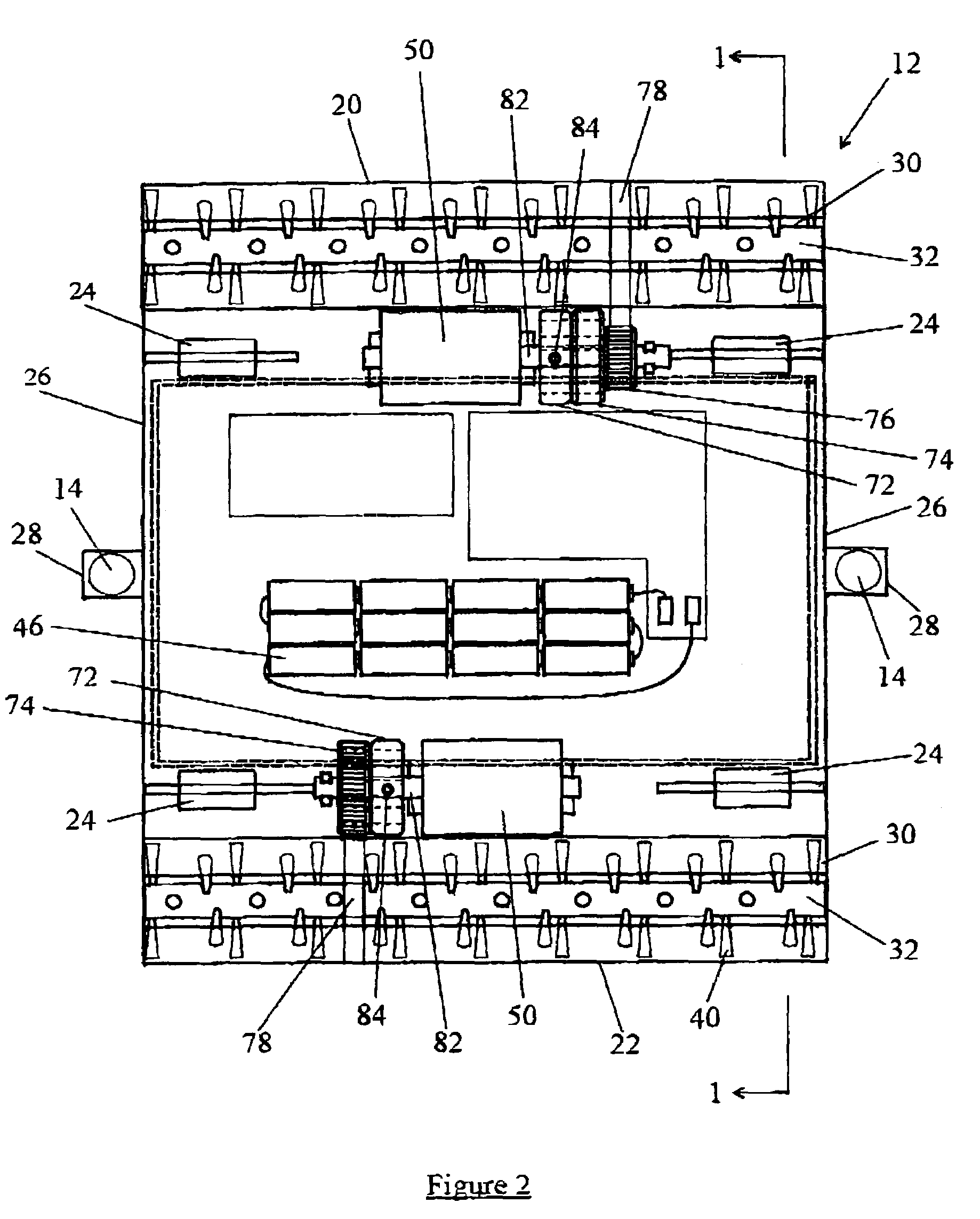[0005]In accordance with one aspect of the instant invention, a magnetic clutch is utilized in the
power transmission coupling between a brush motor and a brush. The magnetic clutch comprises two elements (e.g. opposed plates), which are provided with magnets. Attractive forces between the magnets on the opposed plates will magnetically couple the plates together. Accordingly, the rotation of one plate will cause the other plate to rotate. However, as the plates are not physically connected, if a predetermined amount of torque is applied to one of the plates (e.g. the brush of a
vacuum cleaner becomes jammed), the plates will become magnetically decoupled. Accordingly, continued rotation of one of the plates will not cause the opposed plate to rotate thus preventing damage to the brush, any object entangled in the brush as well as the brush motor.
[0006]In accordance with another aspect of the instant invention, a magnetic clutch is used as part or all of the
power transmission system between a drive means of an appliance and a moving member that is driven by the drive means. For example, the appliance could be a lawnmower wherein the drive means is the motor of the
lawn mower and the moving member, which is driven by the motor, is the
cutting blade of the
lawn mower. Pursuant to such an embodiment, if the
lawn mower blade strikes a
solid object (e.g. a rock), the blade will cease rotating due to the disks of the magnetic clutch becoming magnetically decoupled. Similarly, the appliance could be an edge
trimmer, a hedge
trimmer or other garden implement. In addition, the appliance could be a
power tool such as a
drill, a skill saw, a jigsaw, a
sander or the like. For example, in the case of a
drill, the drive means could be the motor of the
power tool. The moving member, which is driven by the drive means, could be the chuck in which a
drill bit is mounted. According to such an embodiment, if more than a predetermined amount of torque is applied to the
drill bit when a hole is being drilled in an object, then the chuck could become magnetically decoupled from the
drive motor of the drill thereby preventing damage to the
drill bit or overheating of the motor of the drill.
[0007]One
advantage of the use of a magnetic clutch in an appliance, such as a vacuum cleaner, garden tool or
power tool, is that the movement or rotation of a rotary brush,
cutting blade or the reciprocating movement of the blade of a jig saw may be stopped if the moving member becomes jammed or if an excessive restraining force is applied to the moving member without the need of an electric circuit to monitor the current drawn by an
electric motor.
[0008]A further
advantage is that a magnetic clutch may be employed if the drive means is not an electric motor. For example, the drive means could be an air
turbine in the case of a vacuum cleaner or a pneumatic air feed in the case of a power tool. The use of a magnetic clutch does not require monitoring the condition of an electric motor and accordingly may be used regardless of the power source which is utilized to drive the moving member.
[0010]In accordance with another embodiment of the instant invention, an improved magnetic clutch is disclosed. Pursuant to such an embodiment, the clutch comprises opposed elements each of which contains at least two magnets, the outer poles of which are of opposed or reverse polarity so that, in one orientation, the opposed elements will be magnetically attracted to each other (i.e. magnetically coupled) and, in a second orientation, the opposed elements will be magnetically repelled from each other (i.e. magnetically decoupled). One of the plates is non-rotatably mounted to a shaft (e.g. the shaft of a drive motor). The other of the plates is freely rotatably mounted on a shaft. Accordingly, the opposed plate will only rotate if it is magnetically coupled to the first plate. At lease one of the plates is mounted for lateral motion away from the other plate (e.g. it may be slidably mounted on a shaft). Accordingly, if the plates become magnetically decoupled, the repulsive forces between opposed magnets will cause the plate that is slidably mounted on the shaft to move away from the other opposed plate. If the plates are maintained in closed
proximate relationship when they are magnetically decoupled, the induced eddy currents caused by the relative rotation of one plate with respect to the other will result in heating of the magnets provided in the plates. Excessive heating can damage the magnets. An
advantage of the embodiment according to this aspect of the invention is that the separation of the magnets, due to the separation of the opposed plates due to the repulsive forces between the magnets on the opposed plates when the plates become magnetically decoupled, reduces the induced heating of the magnets due to the continued rotation of one of the plates with respect to the other when the plates become magnetically decoupled.
 Login to View More
Login to View More  Login to View More
Login to View More 


